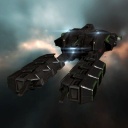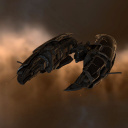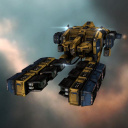Difference between revisions of "User:Cassiel Seraphim/Sandbox"
m (→Layered images) |
|||
| (4 intermediate revisions by the same user not shown) | |||
| Line 183: | Line 183: | ||
|} | |} | ||
|} | |} | ||
| + | |||
| + | = Pre-tag with markups = | ||
| + | Sometimes you want to combine showing raw code, which is easily done with the {{co|violet|<pre></pre>}} html-tag or with the {{t|code}}-template, but also do some markup on it to illustrate what to change. | ||
| + | |||
| + | Here's an example of how it can be done, taken from the [[overview manipulation]] page: | ||
| + | |||
| + | <pre<includeonly></includeonly>> | ||
| + | tabSetup: {{co|lightgreen|-- This identifies the start of the code handling tabs.}} | ||
| + | - - 0 {{co|lightgreen|-- First tab.}} | ||
| + | - - - bracket | ||
| + | - null | ||
| + | - - name | ||
| + | - {{co|slateblue|<b>. PvP .</b>}} {{co|lightgreen|-- This is the value for 'name', which is the label for the tab.}} | ||
| + | - - overview | ||
| + | - {{co|slateblue|1a - pvp + drones}} {{co|lightgreen|-- This is the name of the setting that's loaded into this tab.}} | ||
| + | </pre<includeonly></includeonly>> | ||
| + | |||
| + | The key to make this kind of presentation work is to break up the pre-tag with another tag, opening it up with {{co|violet|<pre<includeonly></includeonly>>}} and then closing it with {{co|violet|</pre<includeonly></includeonly>>}}, which will end up changing the parsing behaviour of the page and the end result is that you can combine the best of both worlds, a pre-formatted text you can markup with colours or other highlight-methods. | ||
| + | |||
| + | In the rare case your code or text has some templates or wiki-code you don't want to format, but still want to be able to add your own wiki commands you can take this even further by adding {{co|violet|<nowiki>}} to the opening pre-line and {{co|violet|</nowiki>}} in the closing part then wrap any individual wiki-code inside with the reverse {{co|violet|</nowiki>}} wiki-code {{co|violet|<nowiki>}} markup. | ||
| + | |||
| + | Since this opens up for html-tags as well as wiki-markups it might be necessary to break up tags or replace equal signs to get the parsed result to your liking. This can be done by using {{co|slateblue|&lt;}} instead of {{co|violet|<}} and {{co|slateblue|&gt;}} instead of {{co|violet|>}} for tags plus {{co|slateblue|&#61;}} instead of {{co|violet|=}} for the equal sign. Technically you only need to break the tag in one place to achieve this, like using {{co|slateblue|<pre&gt;}} as this will be enough for the parser to ignore the incomplete tag, but sometimes it's worth changing both brackets to avoid any potential problems with the rest of the code. | ||
= Useful HTML-codes = | = Useful HTML-codes = | ||
| Line 212: | Line 234: | ||
| valign="top" | <br>For more HTML-codes, see this site:<br>[http://www.ascii.cl/htmlcodes.htm HTML Codes - Table of ascii characters and symbols] | | valign="top" | <br>For more HTML-codes, see this site:<br>[http://www.ascii.cl/htmlcodes.htm HTML Codes - Table of ascii characters and symbols] | ||
|} | |} | ||
| + | |||
| + | = CSS table-magic = | ||
| + | Sometimes you just want some more granular control over formatting in you table, be that row-wise or column-wise. A wonderful and might I add neat trick is to use {{co|violet|nth-child()}} or {{co|violet|nth-last-child()}} to select which columns (or other element) should be affected by a specific format through the parameter variable. | ||
| + | |||
| + | The parameter can allow you to do simple identifications like {{co|slateblue|(1)}} for '''first''', {{co|slateblue|(odd)}} for '''first, third, fifth etc''' or more grouped selections like {{co|slateblue|(-n+2)}} for '''first two columns''' etc. Then {{co|violet|nth-last-child()}} reverses it and {{co|slateblue|(1)}} turns to '''last''' and {{co|slateblue|(-n+2)}} to '''last two right-most columns''' for example. | ||
| + | |||
| + | Add the following CSS-snippet to the page/section before the actual table: | ||
| + | <pre> | ||
| + | {{#css: | ||
| + | tr td:nth-child(-n+2) { text-align: left; } | ||
| + | }} | ||
| + | </pre> | ||
| + | Then continue with the actual table: | ||
| + | <pre> | ||
| + | {| class="wikitable" style="text-align: center;" | ||
| + | ! Column 1 | ||
| + | ! Column 2 | ||
| + | ! Column 3 | ||
| + | ! Column 4 | ||
| + | |- | ||
| + | | Foo | ||
| + | | Bar | ||
| + | | 1 | ||
| + | | 2 | ||
| + | |} | ||
| + | </pre> | ||
| + | That will allow you to make a simple and clean table, that's easy for people to edit and read, without cluttering it up with various styles on a cell by cell basis when all you want to do is have a table mostly aligned one way but specifically tailor a few columns in a different way. | ||
| + | |||
| + | This is how it ends up, affected rows highlighted in {{co|slateblue|blue}}: | ||
| + | {{#css: | ||
| + | .testing tr td:nth-child(-n+2) { text-align: left; } | ||
| + | }} | ||
| + | {| class="wikitable testing" style="text-align: center;" | ||
| + | ! Column 1 | ||
| + | ! Column 2 | ||
| + | ! Column 3 | ||
| + | ! Column 4 | ||
| + | |- | ||
| + | | {{co|slateblue|Foo}} | ||
| + | | {{co|slateblue|Bar}} | ||
| + | | 1 | ||
| + | | 2 | ||
| + | |} | ||
| + | This is of course not limited to columns, but can also easily be used to alternate background colours for rows etc. For more examples of how you can use the selector part, see [https://css-tricks.com/almanac/selectors/n/nth-child/ :nth-child selector] | ||
= Colours = | = Colours = | ||
Latest revision as of 19:34, 29 January 2021
Icons
| white | green | incursions | checkers | locked | miscellaneous |
|---|---|---|---|---|---|
|
|
|
| Help/info | Post-its | Settings |
|---|---|---|
Progression template
For resists:
Resist-table
| Ship Stats | |||||||||
|---|---|---|---|---|---|---|---|---|---|
| 2,500 HP | 60 % |
60 % |
60 % |
60 % | |||||
| 1,250 HP | 43 % |
43 % |
43 % |
43 % | |||||
| 625 HP | 0 % |
0 % |
0 % |
0 % | |||||
What happens when you disconnect from the game?
a) Your ship will only try to warp out once (1,000,000 km in a random direction), if for some reason you can't warp right then and there, there will be no more attempts to emergency warp. If you get killed, your pod will also try to warp out once, but like your ship just that one time.
b) Modules will continue to cycle while you have cap, hardeners will stay on, guns will continue to fire (while having ammo) etc.
c) Skills will continue to have an effect, modules like EANMs will continue to function at the same level even if you're disconnected.
d) If they stop shooting you at some point, you'll automatically log out of the game for real as soon as the timers run out, regardless how many times they've been refreshed (this was obvious but still thought I'd double-check it).
Layered images
Sometimes it makes sense to manually build up an image comprised of an image and a tag, two or more images or a semi-transparent label over an image.
|
| ||||||||||||
|
|
|
|
|
Pre-tag with markups
Sometimes you want to combine showing raw code, which is easily done with the <pre></pre> html-tag or with the {{code}}-template, but also do some markup on it to illustrate what to change.
Here's an example of how it can be done, taken from the overview manipulation page:
tabSetup: -- This identifies the start of the code handling tabs. - - 0 -- First tab. - - - bracket - null - - name - <b>. PvP .</b> -- This is the value for 'name', which is the label for the tab. - - overview - 1a - pvp + drones -- This is the name of the setting that's loaded into this tab.
The key to make this kind of presentation work is to break up the pre-tag with another tag, opening it up with <pre<includeonly></includeonly>> and then closing it with </pre<includeonly></includeonly>>, which will end up changing the parsing behaviour of the page and the end result is that you can combine the best of both worlds, a pre-formatted text you can markup with colours or other highlight-methods.
In the rare case your code or text has some templates or wiki-code you don't want to format, but still want to be able to add your own wiki commands you can take this even further by adding <nowiki> to the opening pre-line and </nowiki> in the closing part then wrap any individual wiki-code inside with the reverse </nowiki> wiki-code <nowiki> markup.
Since this opens up for html-tags as well as wiki-markups it might be necessary to break up tags or replace equal signs to get the parsed result to your liking. This can be done by using < instead of < and > instead of > for tags plus = instead of = for the equal sign. Technically you only need to break the tag in one place to achieve this, like using <pre> as this will be enough for the parser to ignore the incomplete tag, but sometimes it's worth changing both brackets to avoid any potential problems with the rest of the code.
Useful HTML-codes
Sometimes you have templates that doesn't allow for showing things like =, < or >, then you can use the following:
|
For more HTML-codes, see this site: HTML Codes - Table of ascii characters and symbols |
CSS table-magic
Sometimes you just want some more granular control over formatting in you table, be that row-wise or column-wise. A wonderful and might I add neat trick is to use nth-child() or nth-last-child() to select which columns (or other element) should be affected by a specific format through the parameter variable.
The parameter can allow you to do simple identifications like (1) for first, (odd) for first, third, fifth etc or more grouped selections like (-n+2) for first two columns etc. Then nth-last-child() reverses it and (1) turns to last and (-n+2) to last two right-most columns for example.
Add the following CSS-snippet to the page/section before the actual table:
{{#css:
tr td:nth-child(-n+2) { text-align: left; }
}}
Then continue with the actual table:
{| class="wikitable" style="text-align: center;"
! Column 1
! Column 2
! Column 3
! Column 4
|-
| Foo
| Bar
| 1
| 2
|}
That will allow you to make a simple and clean table, that's easy for people to edit and read, without cluttering it up with various styles on a cell by cell basis when all you want to do is have a table mostly aligned one way but specifically tailor a few columns in a different way.
This is how it ends up, affected rows highlighted in blue:
| Column 1 | Column 2 | Column 3 | Column 4 |
|---|---|---|---|
| Foo | Bar | 1 | 2 |
This is of course not limited to columns, but can also easily be used to alternate background colours for rows etc. For more examples of how you can use the selector part, see :nth-child selector
Colours
Some colours I use.
|
|
|
Gradients
You need the CSS script to handle both normal browsers supporting CSS3 and the ingame browser which do not, but apparently has some old webkit support.
| Linear (vertical)
|
Linear (horizontal)
|
Radial
| ||||||||||||||||||||||||||
Tooltips
Normal tooptip: Example1Lorem ipsum dolor sit amet, consectetur adipiscing elit. Vivamus eu hendrerit nisi. Nulla ornare, dolor eu pulvinar faucibus, magna purus tempor orci, sed malesuada urna ligula sit amet mauris. (lots of text) Example2Lorem ipsum dolor sit amet. (short text).
Let's see what the tooltip upLorem ipsum dolor sit amet, consectetur adipiscing elit. Vivamus eu hendrerit nisi. Nulla ornare, dolor eu pulvinar faucibus, magna purus tempor orci, sed malesuada urna ligula sit amet mauris. does compared to tooltip rightLorem ipsum dolor sit amet, consectetur adipiscing elit. Vivamus eu hendrerit nisi. Nulla ornare, dolor eu pulvinar faucibus, magna purus tempor orci, sed malesuada urna ligula sit amet mauris. as well as how tooltip leftLorem ipsum dolor sit amet, consectetur adipiscing elit. Vivamus eu hendrerit nisi. Nulla ornare, dolor eu pulvinar faucibus, magna purus tempor orci, sed malesuada urna ligula sit amet mauris. differ from tooltip downLorem ipsum dolor sit amet, consectetur adipiscing elit. Vivamus eu hendrerit nisi. Nulla ornare, dolor eu pulvinar faucibus, magna purus tempor orci, sed malesuada urna ligula sit amet mauris. when put in the end. Does this normal tooltipLorem ipsum dolor sit amet, consectetur adipiscing elit. Vivamus eu hendrerit nisi. Nulla ornare, dolor eu pulvinar faucibus, magna purus tempor orci, sed malesuada urna ligula sit amet mauris. change?
Now how about an image like this? ![]()
![]() -60% speed reduction at 30 km. or a larger one like
-60% speed reduction at 30 km. or a larger one like  Lorem ipsum dolor sit amet, consectetur adipiscing elit. Vivamus eu hendrerit nisi. Nulla ornare, dolor eu pulvinar faucibus, magna purus tempor orci, sed malesuada urna ligula sit amet mauris.
Lorem ipsum dolor sit amet, consectetur adipiscing elit. Vivamus eu hendrerit nisi. Nulla ornare, dolor eu pulvinar faucibus, magna purus tempor orci, sed malesuada urna ligula sit amet mauris.
Warp disruption
Certain actions are prevented by warp disruption:
| Actions and restrictions | Warp disruption |
Warp scrambling |
 Interdiction probe |
 Interdiction field |
 Infinity-point |
 Infinity-scram |
|---|---|---|---|---|---|---|
| Activating your Warp Drive | ||||||
| Activating an Acceleration Gate | ||||||
| Activating a Star Gate (sub-capital ships) | ||||||
| Activating a Star Gate (capital ships) | ||||||
| Activating a Microwarpdrive (MWD) | ||||||
| Activating a Micro Jump Drive (MJD) | ||||||
| Activating a Micro Jump Drive Field Generator | ||||||
| Activating a Jump Drive | ||||||
| Docking in a Station | ||||||
| Docking in an Upwell structure |










